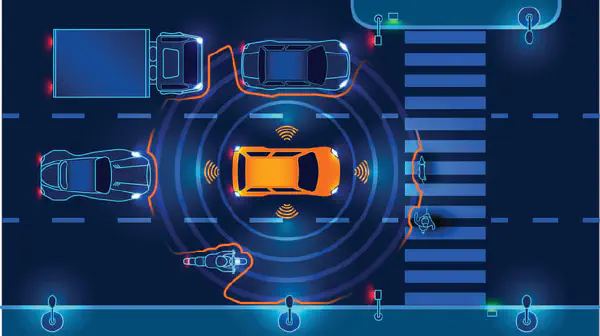
In recent years, the world has witnessed a remarkable transformation in transportation technology: the rise of autonomous vehicles. Self-driving cars, drones, and other autonomous systems are no longer the stuff of science fiction but are becoming an increasingly integral part of our daily lives. These innovations are made possible, in large part, by the wonders of image processing technology.
In this blog, we’ll explore the pivotal role that image processing plays in the development and operation of autonomous vehicles, ushering in a new era of safe and efficient transportation.
Understanding Image Processing in Autonomous Vehicles
Image processing, in the context of autonomous vehicles, refers to the use of cameras and sensors to capture, analyze, and interpret visual data from the vehicle’s surroundings. This data is then used to make real-time decisions, ensuring the safe navigation of the vehicle. Here are some key ways image processing is essential to autonomous vehicles:
- Object Detection and Recognition
- Autonomous vehicles rely on image processing to detect and recognize various objects in their environment. This includes identifying pedestrians, other vehicles, traffic signs, traffic lights, and road markings. Advanced algorithms analyze images and classify objects, allowing the vehicle to react accordingly.
- Path Planning and Navigation
- Image processing helps autonomous vehicles understand the road’s geometry and topology. This knowledge is used to plan a safe and efficient path to the destination. The system can adjust its trajectory in real time, avoiding obstacles and maintaining the correct lane.
- Scene Segmentation
- Autonomous vehicles need to differentiate between different parts of the environment, such as distinguishing the road from the sidewalk or identifying the lane boundaries. Image processing techniques, such as semantic segmentation, provide the vehicle with a clear understanding of its surroundings.
- Object Tracking
- As vehicles move through their environment, they need to track the motion and position of other objects, like vehicles and pedestrians. Image processing allows for continuous monitoring and prediction of object movements, enhancing the vehicle’s ability to make informed decisions.
Challenges in Image Processing for Autonomous Vehicles
While image processing is a cornerstone of autonomous vehicles, it comes with its own set of challenges:
- Adverse Weather Conditions
- Rain, snow, fog, and glare from the sun can obscure the visibility of cameras, making it challenging for image processing systems to interpret the surroundings accurately. Engineers are working on developing robust algorithms that can cope with such conditions.
- Hardware Limitations
- Processing large amounts of visual data in real-time requires powerful computing hardware. Autonomous vehicles are equipped with specialized hardware, such as GPUs and TPUs, to handle the computational demands of image processing.
- Data Privacy and Security
- The cameras and sensors on autonomous vehicles generate a significant amount of data. Ensuring the privacy and security of this data is a growing concern, as it can be vulnerable to hacking or misuse.
Conclusion
The integration of image processing in autonomous vehicles has paved the way for safer, more efficient, and environmentally friendly transportation. These systems are capable of reducing accidents, improving traffic flow, and providing mobility solutions to a wide range of users, including those with disabilities or limited mobility. However, the development of autonomous vehicles is an ongoing journey, with constant innovation in image processing and sensor technologies.
As technology continues to advance, we can expect autonomous vehicles to become an increasingly common sight on our roads, enhancing the way we live, work, and travel. Image processing, with its ability to make sense of the world around us, is a critical enabler of this exciting future.